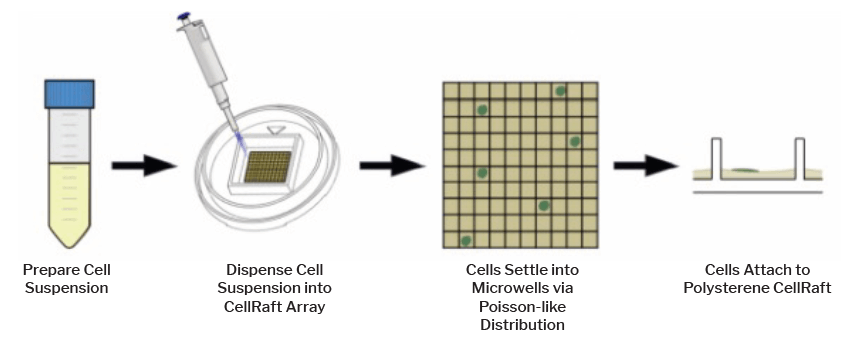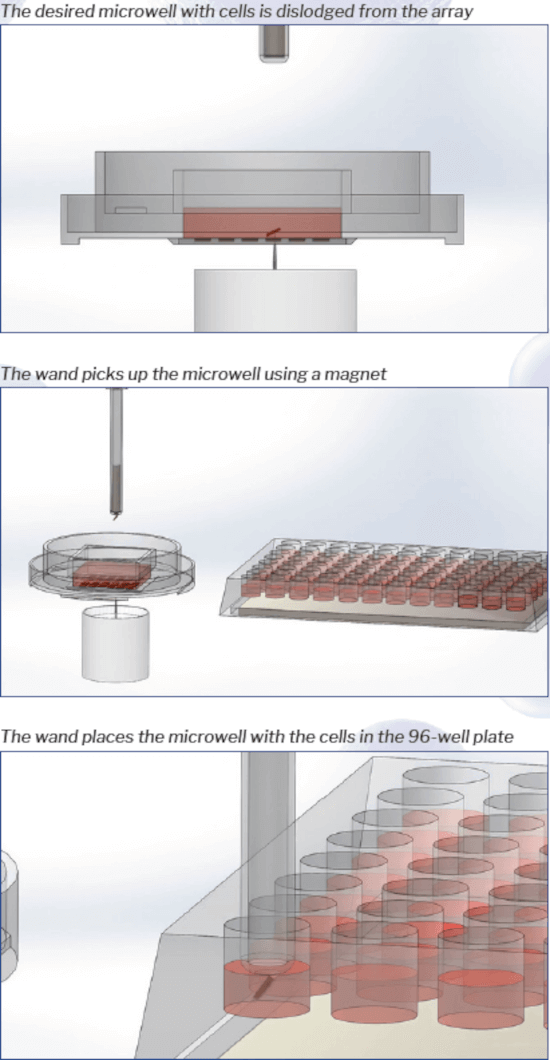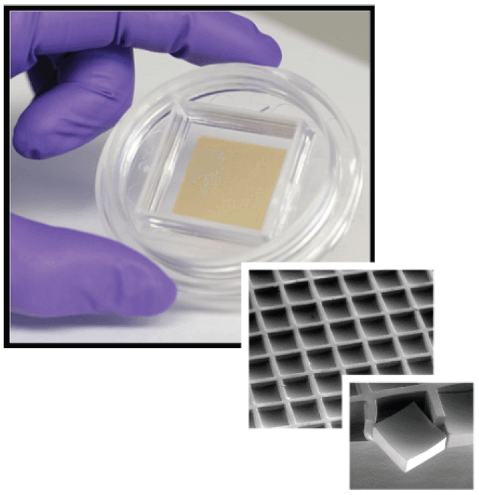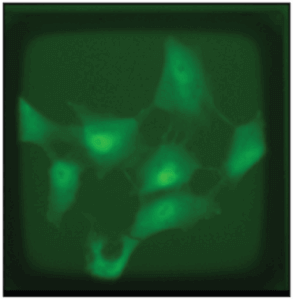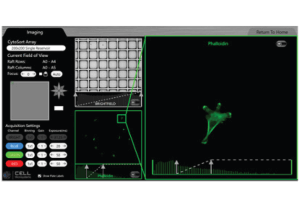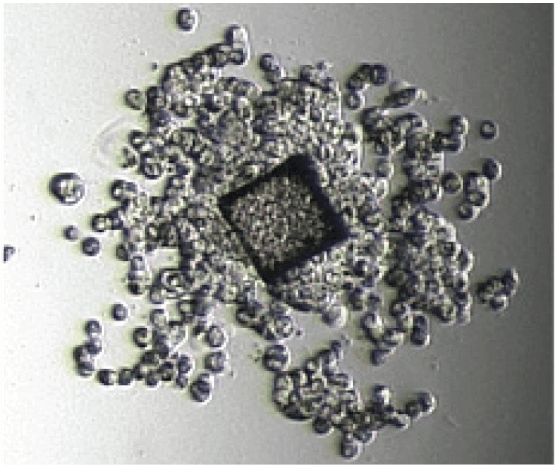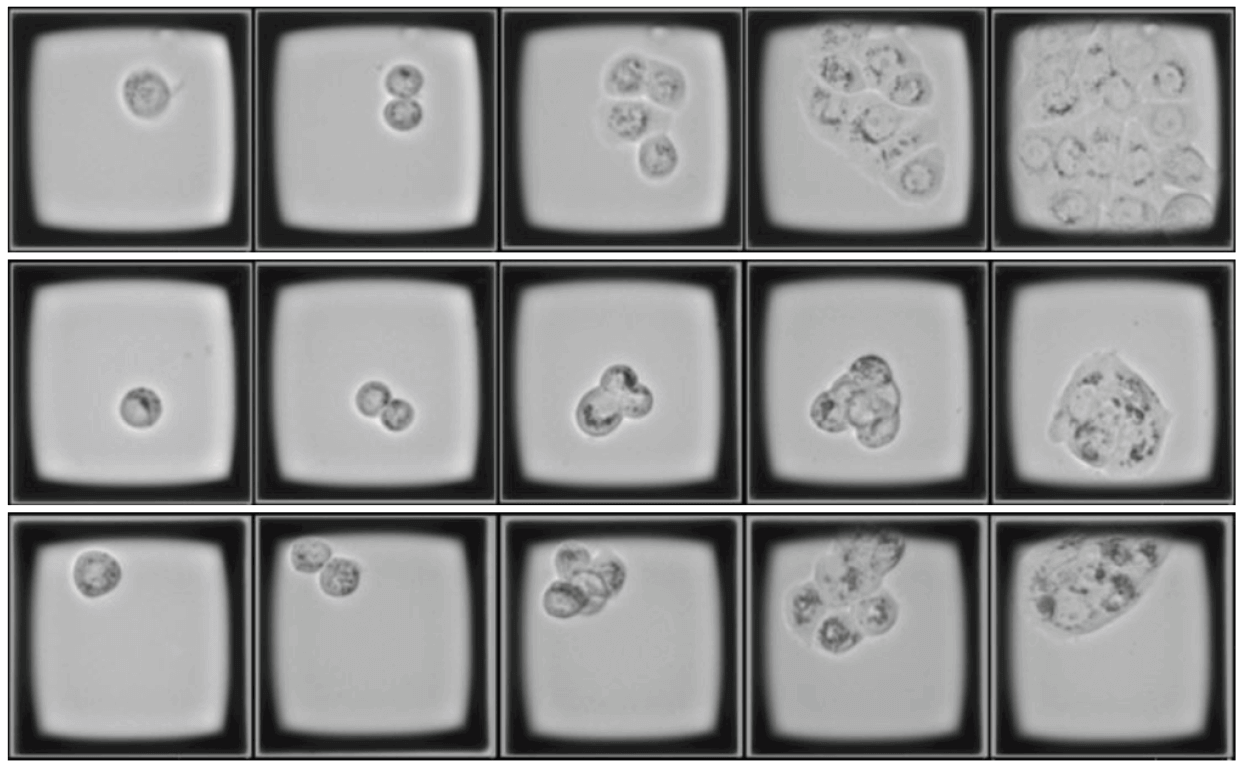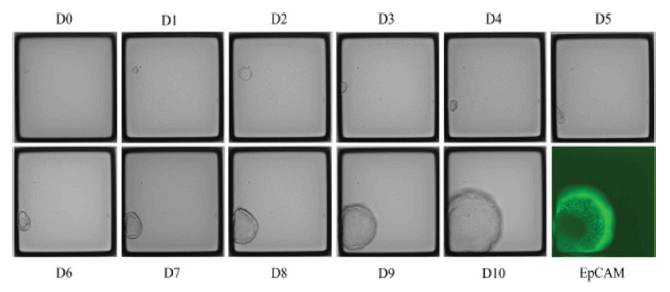The CellRaft Air® System is an integrated platform that uses proprietary technology to maintain cells in an unperturbed state, leading to improved viability of single cells, highly proliferative colonies, and superior clonal outgrowth, that provides a dramatic increase in the number of clones available for downstream applications.
With the system you can:
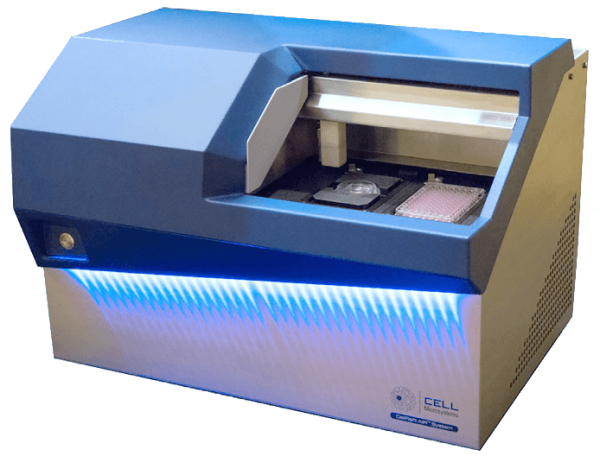
- Obtain 10 – 50X more viable monoclonal colonies
- Grow single cells in a flask-like environment, without physically separating them, eliminating perturbation to cell physiology and ensuring viability and vitality of single cells as they develop into clones
- Identify cells of interest using powerful, label-free brightfield analysis software with user-defined parameters
- Automatically and gently isolate CellRafts containing cells or colonies of interest for downstream endpoint analysis or clonal expansion
- Create a complete image-based record of all clones to support regulatory submissions
Overview
Applications
- Cell line development
- CRISPR gene editing
- Stem cell culture
- Organoid development
- Single-cell genomics
Features
- Bench-top instrument
- Attached computer
- On-instrument and off-instrument software included
- Optional stage-top incubation system
- Start-up kits come with CellRaft Arrays and accessories
On-Array Assays
- Cell-drug interactions
- Cell-cell interations
- Co-Culture
- Cell characterization
Ideal Cell Types
- Stem cells (including iPSCs)
- Animal or human cells
- Primary cells
- Immortalized cells
- Adherent cells
- Suspension cells
Principle
One of the biggest bottlenecks in cell culture laboratories is the ability to produce clones at a fast rate. The CellRaft AIR is uniquely placed in that cells are able to survive, as they share the media, and it is very gentle. Using the CellRaft AIR System, we are really able to speed up the process of generating single cells.
CellRaft Technology
The CellRaft technology is an entirely new and seamless way of enabling cell culture, analysis, and isolation that goes beyond trypsinization and dispensing a single cell into a well. This unique method for developing monoclonal colonies from single cells uses three components (1) a CellRaft Array comprised of CellRafts (2) CellRaft Cytometry™ software and (3) CellRaft AIR, an integrated platform that incorporates rapid imaging, software-guided identification, and automated isolation.
What is a CellRaft?
The key to the technology is the CellRaft Array, a novel proprietary tissue culture dish containing thousands of microscale cell culture growth surfaces called CellRafts. Each CellRaft is housed within an individual microwell, allowing for gravity-based separation of a population into single cells. Despite being spatially separated in the microwells, the novel design of the array allows the entire cell population to share a contiguous media volume, which leads to improved viability and proliferation of single cells compared to other single-cell culture methods. The cells are cultured while attached to the CellRaft for the entire duration of the experiment, with no need for dissociation or sorting to recover the validated clones.
1. Seed Cells on CellRaft Array
Seeding cells on the CellRaft array is straightforward and comparable to seeding cells on any standard tissue culture dish. The dilute cell suspension is dispensed into the central reservoir, and cells settle into the microwells by gravity.
The CellRaft Arrays are designed to yield a high number of single cells with the added benefit of shared media in a flask-like environment to increase viability and monoclonal outgrowth.
2. Image using CellRaft AIR System
Brightfield and fluorescence scanning provides single-cell resolution imaging in as little as seven minutes. The keyed orientation of the CellRaft arrays means that CellRafts can be scanned over the days or weeks needed to identify samples of interest without monopolizing the instrument with a single experiment.
Finding those precious clones is easy using the CellRaft AIR System and the CellRaft Cytometry™ software. The arrays are rapidly scanned on the instrument in brightfield and three-color fluorescence can take as little as seven minutes.
3. Identify Cells of Interest in Software
CellRaft Cytometry™ allows for image-based verification of single cells to ensure monoclonality and analysis of a variety of parameters over time, ranging from morphology to gene expression. Users can easily define the characteristics of the target cells or colonies and map them for software-guided CellRaft selection for downstream isolation.
4. Automated Isolation to 96-well Plate
After identification, the CellRafts are gently dislodged from the CellRaft Array by a release needle and retrieved from the array by a magnetic wand to transfer the CellRafts into 96-well plates for downstream analysis.
The fully automated CellRaft AIR System enables gentle, dissociation free isolation of fully validated, intact clones for propagation without dissociation or fluidics.
Cell Line Development
Traditionally, a limiting dilution method is used to isolate and generate single cell-derived clones, which is both time and cost prohibitive due to low efficiency of success and the manual labor input required to successfully generate a useful cell line. Several automated technologies exist that aim to improve the efficiency of single cell or colony isolation, such as FACS, colony pickers, and droplet dispensers, but they often reduce cell viability due to harsh manipulation and stress on cells that are forced through fluidic systems or to grow alone in a large volume of media.
The CellRaft technology allows for streamlined and efficient cell line development. The AIR system offers an automated solution to an otherwise labor-intensive workflow and maintains cell health, provides time-course imaging for clonal verification, and delivers automated isolation for downstream propagation, altogether providing a superior platform that is more time, labor, and costefficient for cell line development.
Stem Cell Culture
The research benefits of using iPSCs are often outweighed by the challenges of working with them. Stem cells require specialized media and growth conditions and are notoriously difficult to grow from single cell culture. With the CellRaft AIR® System, stem cells plated on the CellRaft Array show improved viability due to shared media, low culture volumes, and isolation of intact clonal colonies from single iPSCs. With the CellRaft technology, expensive media, extracellular matrix, and viability enhancers are significantly reduced, leading to cost and consumable savings as well.
CRISPR
The process of cellular cloning and sorting is a major bottleneck in the CRISPR/Cas workflow. The imaging capabilities of the CellRaft AIR® System reduces this bottleneck by providing the user with Day-0-scans to visually connect CRISPR edits to desired phenotype expression at the single cell level. The user can identify clones of interest and confirm that clonal colony propagation began from a single cell. The array is scanned and imaged over time, allowing the user to easily identify which cells to target and track through the initial colony growth phase.
Genomics
Even with the use of highly advanced FACS platforms, enriched cell populations often contain dead cells, expression negative cells, doublets, debris, or other artifacts leading to false positives and negatives. The imaging capabilities of the CellRaft AIR System provide the user with initial scans to not only see the quality and phenotype of the cells, but to choose only the best cells. Eliminate doublets and debris with automated selection of the best single cells that maintain their native phenotype for downstream genomic analysis. The system’s unique design allows users to connect downstream nucleic acid and protein profiles to a specific individual cell, providing greater value to each experiment.
Organoid Development
With this platform, CellRafts containing 3D structures of interest can be easily identified using CellRaft Cytometry™. The system enables visual verification of single cell clonality, morphology, and growth, providing critical data points for workflows requiring track and traceability for audit purposes. Identified organoids can be further evaluated and selected for phenotypic characteristics, such as organoid diameter, circularity, and fluorescence intensity.
The CellRaft AIR System offers a solution with a fully automated imaging and isolation workflow for organoid culture. Capture images in brightfield and fluorescence channels throughout the full height of the organoid Z-stack imaging. The images showing detailed phenotypic characterization are easily exported for the desired use.
In typical 3D cultures, the organoids overlap, requiring multifocal imaging with expensive equipment. They grow at different sizes and rates, leading to heterogeneity in viability and phenotype, resulting in confusing and uninterpretable data. Organoids grown in bulk culture are stuck in viscous extracellular matrix and are difficult to retrieve intact.
A collaborative case study in the use of a new technology platform for fast and easy cell line development
In this case study, after flow sorting failed to generate a stable double positive cell population, even after multiple rounds of sorting, CellRaft Technology was able to identify and isolate rare double positive clones that formed viable colonies.
The generation of these double positive clonal lines saved my lab of a lot of time and effort, allowing the rapid generation of multiple highly stable clones that had persistent expression for in vitro and in vivo assays. This proved superior to our flow-based methodologies, which were never as transgene positive or stable (in terms of expression) over multiple passages.

Downloads
More Information
Consumables
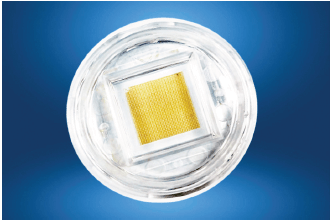
CellRaft Single Array
Price on request
Our most versatile array, suitable for any application.
Sizes:
– 100 x 100 microns microwells – 40k CellRafts Per Array
– 200 x 200 microns microwells – 10k CellRafts Per Array
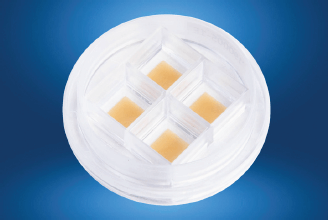
CellRaft Quad Array
Price on request
Four individual reservoirs make this array the best choice for:
• Clonal expansion and colony selection for parallel gene editing and cloning
• Multivariable treatments and differing media applications
Sizes:
– 100 x 100 microns microwells – 25,600 CellRafts Per Array (6.4k per reservoir)
– 200 x 200 microns microwells – 6,400 CellRafts Per Array (1.6k per reservoir)
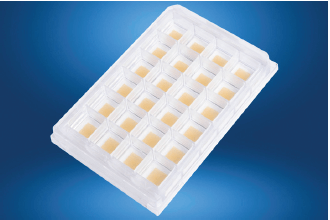
CellRaft HexaQuad™ Array
Price on request
Up to 24 individual reservoirs make this array the best choice for:
• High throughput CRISPR screening, clonal expansion and colony selection
• On-array functional assays and dosing studies
Sizes:
– 100 x 100 microns microwells – 153,600 CellRafts Per Array (6.4k per reservoir)
– 200 x 200 microns microwells – 38,400 CellRafts Per Array (1.6k per reservoir)
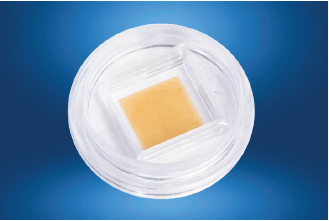
3D CellRaft Array
Price on request
Large surface areas that allows cell growth up to 1 mm in diameter make this array best for:
• 3D structures, including organoids
Size:
– 500 x 500 microns microwells – 2,114 CellRafts Per Array
Contact
 Your Partner in Cell Research
Your Partner in Cell Research
Karl-Ferdinand-Braun-Straße 2
28359 Bremen, Germany
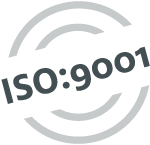
OMNI Life Science GmbH
Laufenstraße 90
4053 Basel, Switzerland
